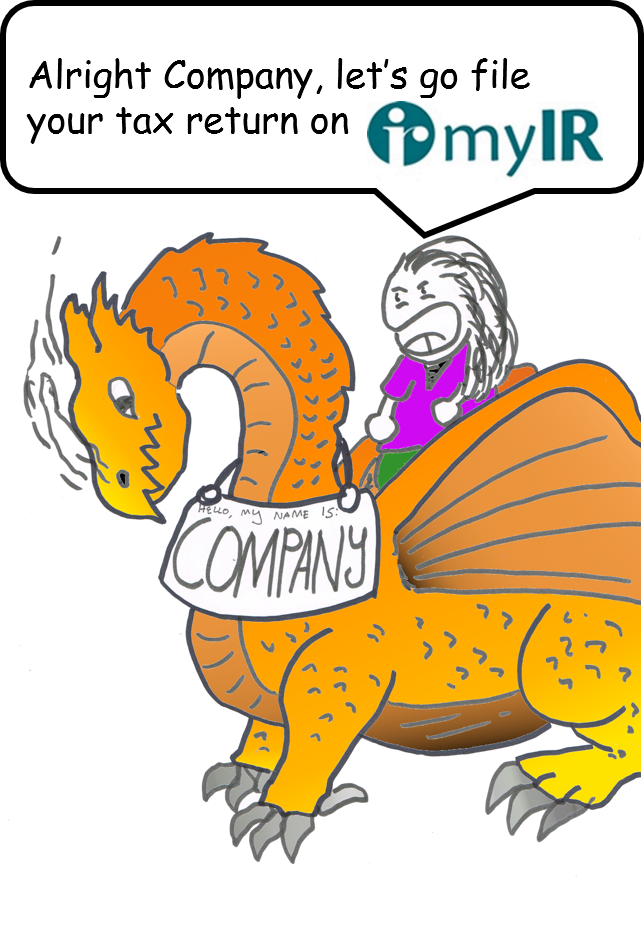
A couple of weeks ago I wrote a guide to filing taxes online for self-employed individuals. Now I’m back with a guide for companies that want to file taxes online!
I’ve been planning to write this article for a week now – but I’ve only been able to do it now that the My IR system is back online! The new system also has some new features that make it easier for you to apply for tax relief and other cool things, but I will cover that in a later article. Today – this one is for all of you little guys out there with companies you need to file tax returns for. So let’s not waste time and get into it!
DISCLAIMER: The advice contained in this article assumes that the reader runs a small operation with little to no complexity in terms of business structure, shareholding and income streams. If your company is complex, you might want to seek advice from an accountant.
To file your company’s IR 4 tax return, you need to login to My IR with your company’s login or you need to associate your company’s IRD login with your login. If you haven’t done this yet, you can go to the IRD website and click on the register button in the top right hand corner. The steps are very simple and you should be able to figure it out : ).
Once you have logged in, select ‘Income tax’

That should take you to the Income tax page – after that click on ‘file return’ in the top right corner:
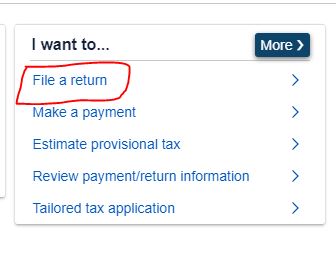
A window should pop-up asking you which year to file a return for – click on ‘File Now’ next to the 31 March 2020 line:

Read through the instructions and terms and then click next
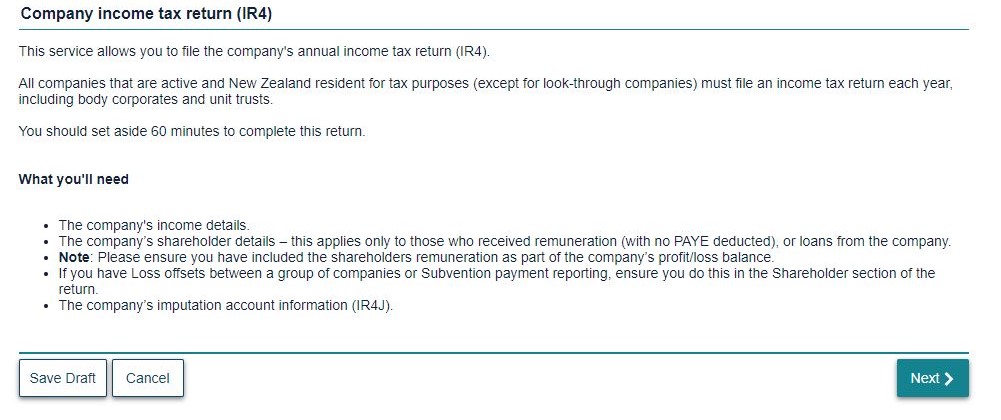
Make sure your BIC is correct. If it is not filled in, go and click ‘Find my BIC code’ and fill it in the box and click next:

For most companies – you only need to tick ‘Business or other rental income’ at this stage. Tick ‘This is a nil return’ if you haven’t made any transactions through your company yet. At this stage, don’t worry about the other types of income. If your company has multiple non-business streams of income, I highly recommend talking to an accountant to help you get sorted instead of trying to figure this out yourself.
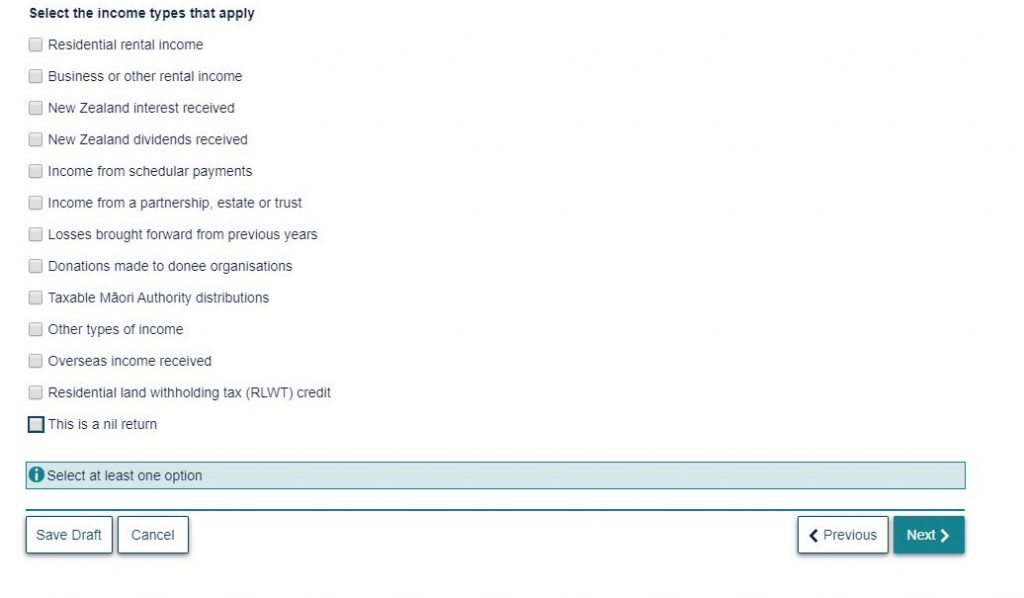

The next page will ask you to tick any situation that applies. If you are including attachments – like a financial statement or any other document, check the first box. The second box applies if this is your first year of actually trading. The third box is self-explanatory. In most cases, you would not have to worry about foreign investor tax credits unless you have foreign investors in your company, in which case, get an accountant!

The next page will ask you to make disclosures. In most circumstances, you would have no disclosures to make. If you suspect that any of the other boxes may apply to you – seek advice from an accountant.
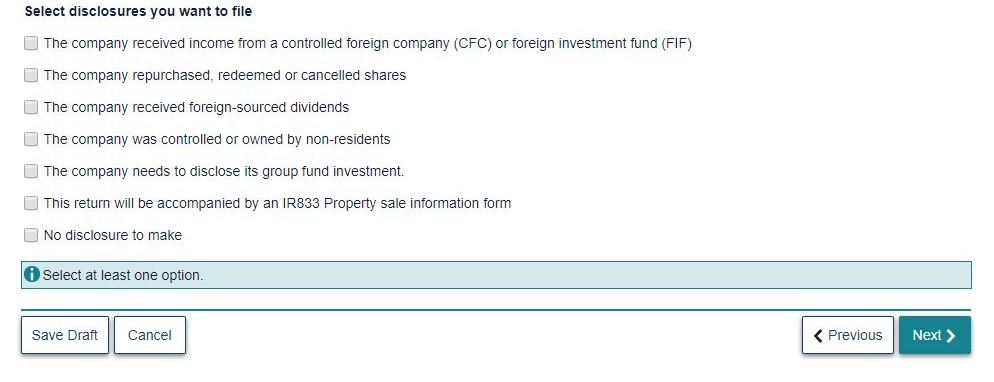
In the next page, the fun really starts! What sets apart company returns from self-employed returns is that you need to list ALL of the shareholders of your company. Look – if you have more than 2000 shareholders, you can upload a file containing all their details. Unfortunately IRD is not specific on the file format – so I’m going to say ‘Excel spreadsheet’ and hope that it is acceptable. Make sure that any file that you upload contains the name and IRD numbers of the shareholders. But let’s be honest, if you have more than 2000 shareholders, then you wouldn’t be reading this blog for guidance.
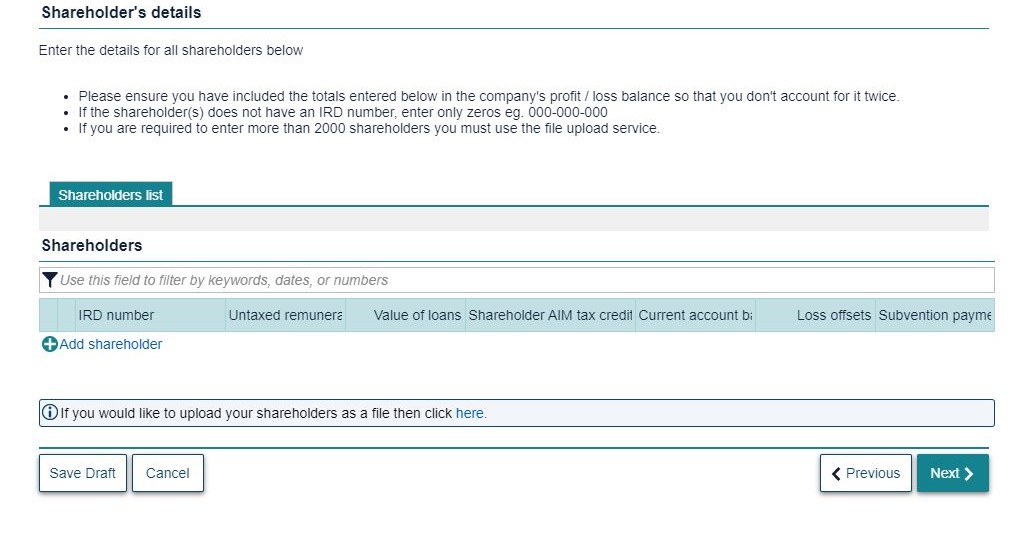
If you click the ‘add shareholder’ button, it will bring you to this page:
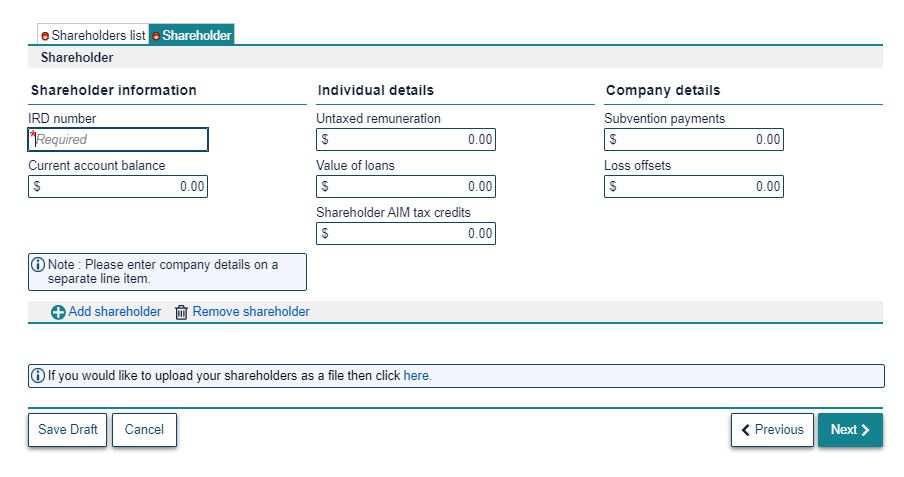
Key in the Shareholder’s IRD number. This is the most important. If you don’t know how to fill in the other fields – you can leave it blank. Click add shareholder when done.
Once you are done adding all shareholders, click next and it will bring you to this page:
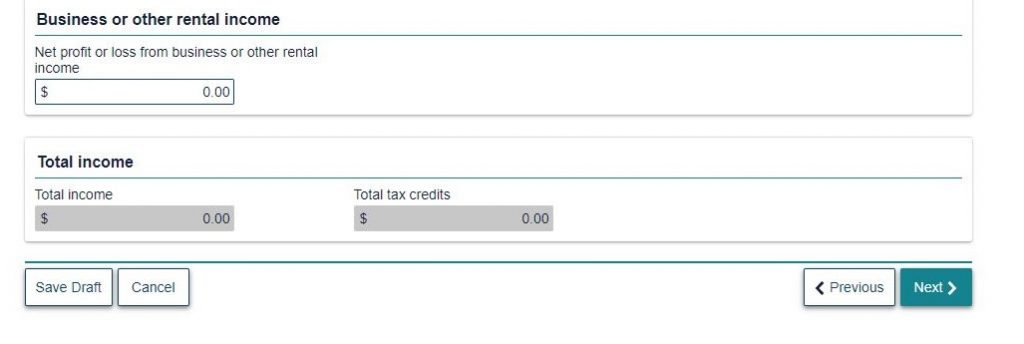
Phewh! Easy stuff! Just key in your net profit or loss from your business. Remember this is your NET (Income minus Expenses) profit or loss. Don’t be mistakenly putting just your income alone. Click next when done.
This will then flow on to your review page – where you make sure that you have the correct figures entered. Check the checkbox saying that you have given the correct information and click next! All done? Nope. Not at all. Far from it. Click next to keep pushing through.
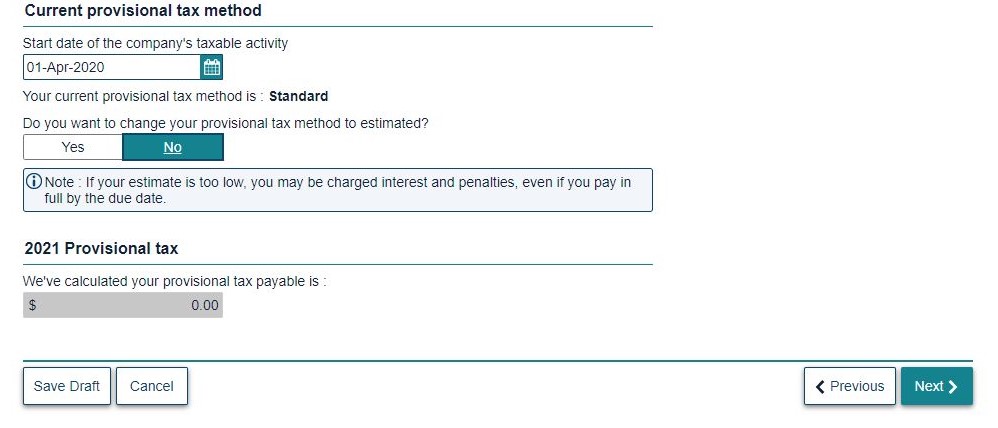
Ah, provisional tax. My favoritest thing in the world *heavy sarcasm*. Ok, if you don’t know what provisional tax is, head on here to read about it. Punch in the start date of your company’s taxable activity (this is the very first date it started earning an income -doesn’t have to be exact, just get the month and year right). Leave your provisional tax method as Standard (leave it on ‘NO’ – no need to complicate things. My IR will handily calculate your provisional tax for the next financial year and it should tell you when your payments are due). Click next when done.
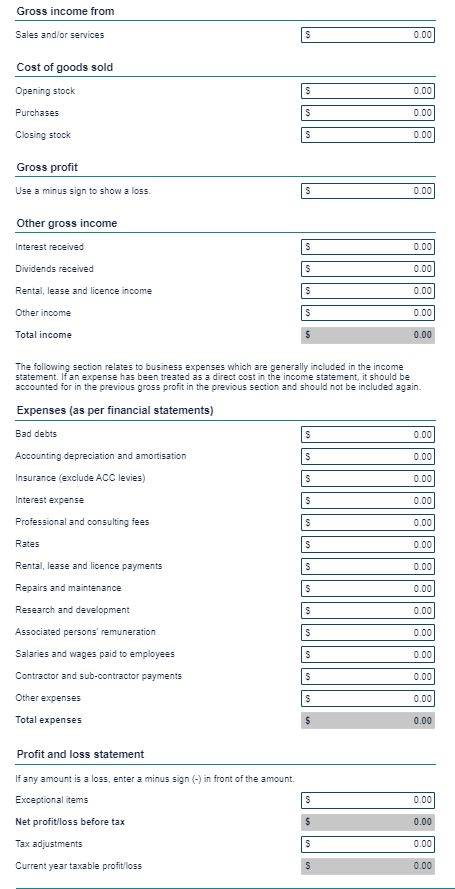
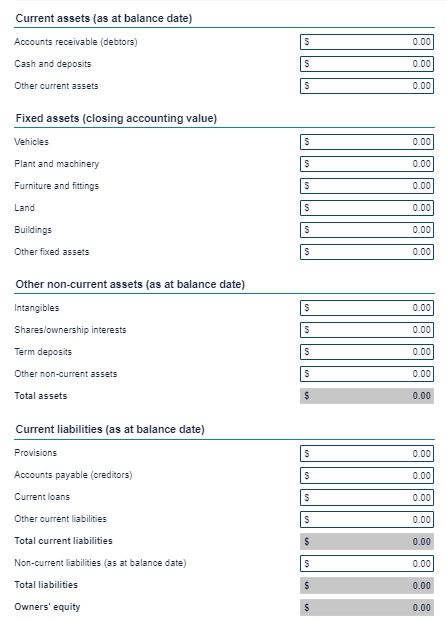
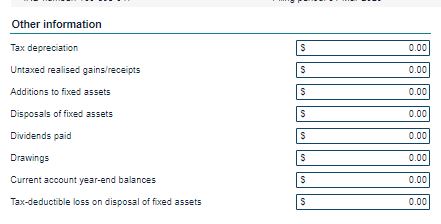
Ok, the next three pages are your IR 10 form. The IR 10 form is used by IRD to maintain a database of financial data for businesses in NZ. Note that you DO NOT NEED to share your financial data with IRD. The filing of an IR 10 form will help speed up your tax return processing (according to the IRD website). I highly recommend you take the time to fill it out because it helps our government have a better idea of the financial situation our businesses are in- it may be tedious but at the very least you can and should fill out the first page which is the income statement – making sure that the net income is the same as the net income reported earlier. If you don’t have the information for pages 2 and 3 (the balance sheet and other information) you can leave them blank. Once you are done with the IR 10 you should see this page:
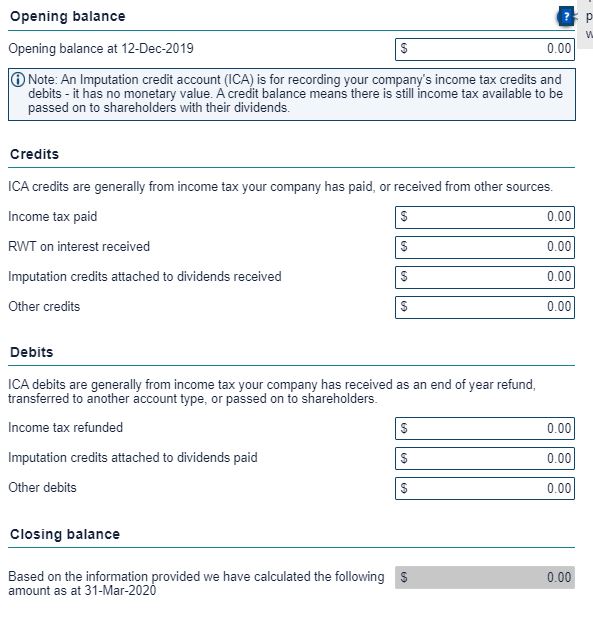
First year of trading? Punch in any RWT (resident withholding tax) your company paid on interest received (you should receive a statement from your bank/investment provider for this) and click next. You can leave the other boxes blank.
Second year of trading? Bring in last year’s closing ICA balance. Record the income tax you have paid ( which is likely provisional tax), any RWT on interest and any Income tax refunded in the correct boxes.
Did your company pay out/receive dividends during the year? Buddy, you need an accountant to work that stuff out for you.

The next page talks about lowest economic interest. If you are a small company with only a few shareholders who all have the same voting rights – just put in 100%. If you have multiple shareholders, each with different voting rights on different aspects of the company – this means that the lowest economic interest is less than 100% and to determine the exact amount you will (you guessed it!) need an accountant.

Did you pay anything to non-resident contractors where you withheld taxes on their behalf? If you did, you would have known by now. Otherwise, probably not. Leave it as No and keep going!
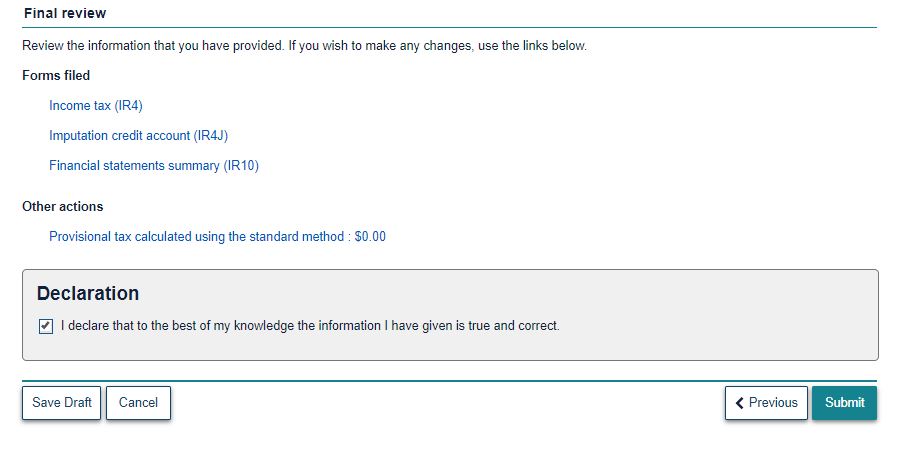
Wooohooo! Final Review!!! Make sure that everything checks out , tick the box and hit submit.
But Sam, I’m reeeaaaaallly not sure if I’ve done this correctly….
Yeah, I get it, there are a lot of boxes to check and spaces to fill. Unfortunately I can’t give any more than general advice in this blog. If you require more personalised help, talk to an accountant today!
